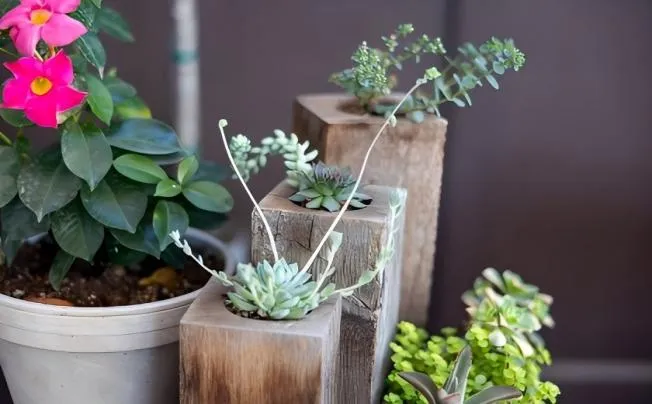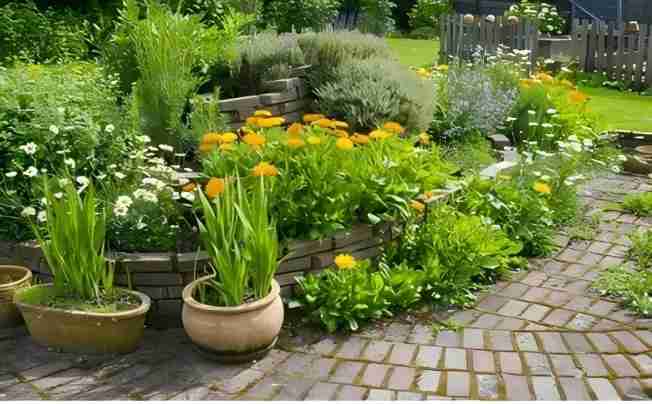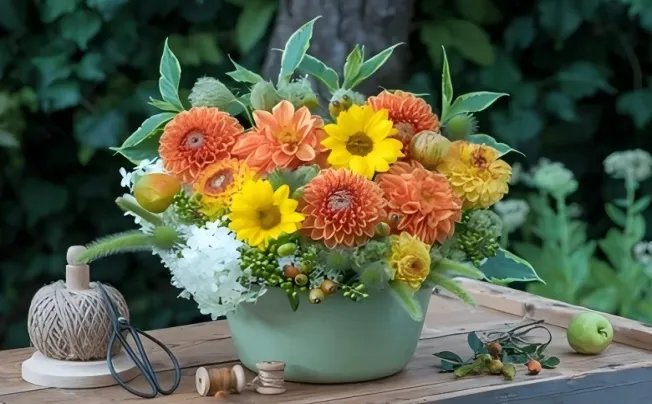What To Look For When Buying Plant Pots?
Flower pots are composed of a range of materials, each with special benefits and drawbacks that impact the plants' growing conditions and are also related to how easy it is for us to maintain them on a daily basis.
Tips for size selection
First, select a flowerpot that is appropriate for the plant's size. In general, medium-sized plants can select a flowerpot with a diameter of 20–30 cm, giant plants require a large flowerpot with a diameter of more than 30 cm, and little plants are appropriate for small flowerpots with a diameter of roughly 10-15 cm. If the flowerpot is too tiny, the plant's root system won't be able to spread out completely, causing crowded roots and limited growth. This will then impact the plant's general growth and development, causing yellowing leaves and poor growth. Conversely, an overly large flowerpot makes it difficult for the water in the soil to evaporate, which can lead to water accumulation, hypoxia, and root system rot. It can also cause the plant's root system to overgrow, consume too many nutrients, and interfere with the plant's ability to flower and fruit.
Second, when selecting the size of the flowerpot, it's crucial to take the plant's rate of growth into account. In the early stages of planting, you can select a little larger flowerpot for plants that develop more quickly. This will provide the plant more room to expand quickly and eliminate the hassle of changing pots frequently. Select a flower pot that is the same size as the plant if it grows slowly. Root rot is more likely to occur in large flower pots since they will retain moisture in the soil for an extended period of time.
The choice of flower pot size will also be influenced by the maintenance environment. Smaller flower pots should be chosen when growing flowers indoors because of the comparatively small space, poor ventilation, and lower light intensity compared to outdoor growing. This will help control soil temperature and humidity and prevent root issues brought on by overwatering or inadequate ventilation. The room is larger and the light and ventilation are better when flowers are grown outside. To provide the roots of the plants more room to grow, fully absorb the water and nutrients in the soil, and encourage plant growth, larger flower pots can be chosen.
However, it's also important to consider the unique needs of various plant species in relation to flower pot sizes. Some plants with shallow root systems, like succulents and herbaceous crabapples, are better suited for shallow and wide pots, which can prevent water buildup in the soil and are favourable for root growth and respiration. In contrast, some vines with well-developed root systems and rapid growth, like clematis and trumpet creeper, require larger pots with moderate depth to meet their root systems' growth and climbing needs.

Depth considerations: deep or shallow basin?
Shallow pots are a better option for plants with shallow roots. These plants have high needs for soil permeability and drainage, and their roots are primarily found in the shallow soil layer. Root rot can be avoided by utilizing shallow pots, which can offer high permeability and stop soil waterlogging. Aloe, cacti, asparagus, azaleas, camellias, Milan, Christmas cacti, and the majority of succulents are common plants that grow well in shallow pots.
Deep pots are a preferable option for plants with fast growth and well-developed root systems. These plants' roots may fully stretch and penetrate deep into the soil in deep pots, giving them enough room to grow and absorb more water and nutrients.
Nonetheless, there are a few unique situations that call for our particular focus. For instance, while planting, amaryllis, a bulbous flower, cannot be fully covered in the ground. Typically, between one-third and half of the bulb is buried in the ground, with the remaining portion visible at the soil's surface. By doing this, the bulb can better absorb light, encourage growth, and avoid rotting.
In addition to wasting room, using a flower pot that is too deep will result in the bulbs rotting from inadequate watering.
In order for the plants to flourish under our careful care and bloom in the most exquisite posture, we must "choose pots according to the flowers" and have a thorough understanding of the root characteristics and growth habits of the plants when determining the depth of the flower pot.

Importance of pelvic floor drilling
Plants breathe through their roots, which require enough oxygen to sustain regular physiological functions. Without a hole at the bottom of the flowerpot, the soil's air cannot circulate with the outside world, and the excess water cannot be released promptly after watering. This will result in water buildup, the soil's air being squeezed out, and a hypoxic root system. Long periods of hypoxia prevent the roots from absorbing water and nutrients normally, and they may eventually rot, impairing the plant's ability to grow regularly and possibly leading to its death.
By opening the holes at the bottom of the flowerpot, air may enter from the bottom and mix with the soil's water, giving the roots enough oxygen and preserving the soil's air permeability. The surplus water that is left behind after watering can also escape through these holes, preventing water buildup and maintaining the soil's moisture content at a level that is ideal for plant roots—neither too wet nor too dry.
In practice, though, some flowerpots have issues with their bottom holes that impact their air permeability and drainage. For instance, some flower pots have too few bottom holes, which slows down drainage and makes it easy for water to accumulate; other flower pots have too few bottom holes, which makes it impossible for plants to get the ventilation and drainage they require.
We can take certain actions to address these issues. If the flower pot's bottom hole is too tiny, we can use drill bits or electric drills to properly enlarge it in order to accelerate drainage. Be mindful of safety during the procedure and wear goggles and gloves to prevent damage. If the flower pot's bottom holes are insufficient, we can extend the drainage and ventilation channels by drilling a few more holes in the proper locations for the bottom of the pot using nails and hammers.
Additionally, we can add a drainage layer—such as ceramsite, gravel, broken bricks, decomposed bark, decomposed peanut shells, coal slag particles, etc.—to the bottom of the flower pot to enhance the drainage and ventilation effect even more. These materials can improve the drainage channel and let water drain more quickly while also lowering soil pressure, which promotes the formation of the root system. They also have good air and water permeability. For instance, expanded clay has a light texture, lots of internal holes, and good air and water permeability. It is possible to prevent water buildup and improve the health of the plant's roots by spreading a layer of expanded clay, one or two centimetres thick, at the bottom of the flowerpot before adding soil.

Selected Blogs
-
What customization services are available for metalworking customization?
2024-12-12
-
What Is The Difference Between A Plant Container And A Raised Bed?
2024-04-23
-
Garden Screening & Fence Panels
2024-04-23
-
Gardening pot selection tips
2024-04-17
-
The function and collocation of horticultural fire pot
2024-04-17


